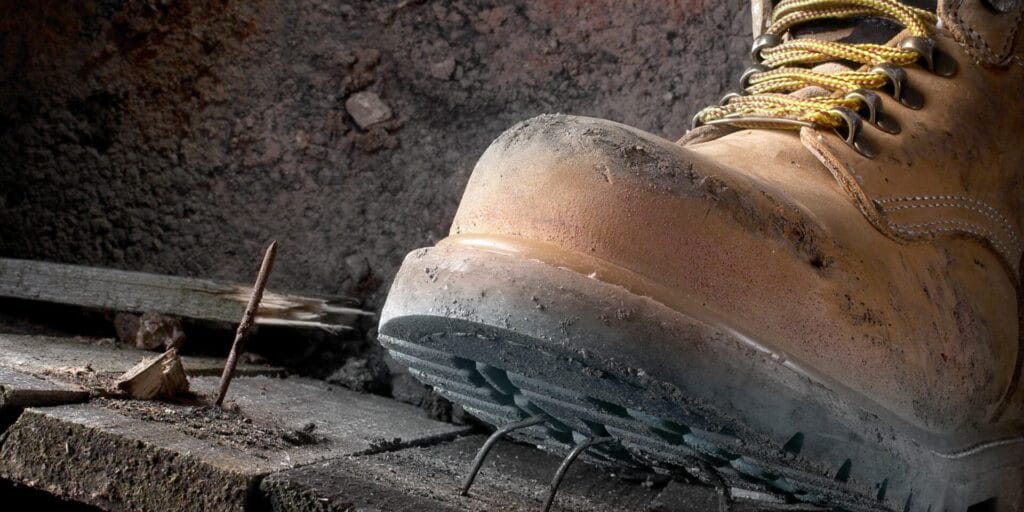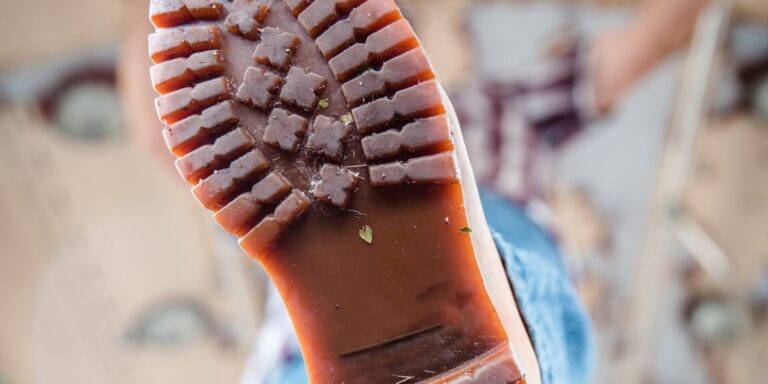In the dynamic landscape of industrial work, ensuring the safety of workers is paramount. As technology advances, so does the structural makeup of safety footwear. Now manufacturers are aiming to provide comprehensive protection without compromising comfort. Two features that are prevalent in today’s industries are metatarsal (Met) guards and puncture resistance. This article will help you understand the traditional forms of these safety features, explore the latest advancements, and discuss how the industry is shaping safety boots with the worker’s well-being in mind.
Table of Contents
What is a Metatarsal (Met) Guard?
To get a better grasp of what they are and the type of protection they offer, it’s important to note the skeletal makeup of our feet. The human foot is made up of 26 bones, with 5 metatarsal bones located on the top of your foot. These bones typically lay right under the tongue of the boot or shoe. While the significance of a safety toe cap is widely acknowledged, what happens when something falls just above the cap? This is where the Metatarsal (MET) guard comes into play.
Traditional Met Guards
Metatarsal injuries are a significant concern in many workplaces. Traditional Met guards, which were often big clunky external attachments, were initially heavy and rigid, causing discomfort and impeding natural movement. So much to the point that there have been some recordable cases of workers tripping because of the added weight and reduced flexibility. These guards were primarily made from steel, offering substantial protection, but unfortunately, it was all at the expense of the person wearing them. While this poses an issue for most employees, external Mets provide a clear indication of who’s wearing the proper protection and who isn’t.
However, with the advancements in material science and manufacturing techniques, this safety feature has undergone a huge transformation. The industry has embraced a new technology – The Internal Met guard. It incorporates innovative technologies that uphold the same safety standards as a traditional steel guard. You might be curious about how internal met guards manage to address all those considerations. The secret lies in the choice of materials.
Technology in Internal Met Guards
An internal met guard is, as it sounds, built into the internal makings of the safety boot. Unlike their external counterparts, these guards provide a sleeker profile while maintaining optimal protection. Several cutting-edge technologies contribute to the effectiveness of internal met guards.
Poron XRD Technology is what manufacturers are using to accomplish this. This impact and shock absorbing material is soft and flexible under normal conditions but instantly firms up upon impact, dispersing energy away from the metatarsal area. This ergonomic approach to incorporating natural contouring metatarsal protection contributes to improved mobility and reduced fatigue.
The Evolution of Puncture Resistance
Puncture injuries, often caused by sharp objects like nails or shards of glass, pose a significant threat in various work environments. Traditional safety footwear incorporated steel plates to provide puncture resistance, but this approach had drawbacks, including increased boot weight, reduced flexibility, and stiffness.
In response to these challenges, the industry has shifted towards using lighter materials for puncture resistance. Advanced materials like aramid fibers, high-performance textiles, and composite materials have become popular alternatives to traditional steel plates.
The workings of this process lie in the specific weaving technique to bring the materials together. The threads are woven so tight that it makes it difficult for any sharp object to penetrate, similar to how a Kevlar vest is produced.
While these materials maintain (or in some cases exceed) the protective capabilities of steel plates, they also significantly reduce the overall weight and discomfort associated with puncture resistant footwear. This is particularly crucial for workers in dynamic environments where swift movement is essential.
At Work Wear Safety, we firmly believe that workers’ safety should be a top priority without sacrificing comfort. With the latest advancements in met guards and puncture resistance technology, choosing work boots with these features is now more advantageous than ever.
Workers no longer need to endure the discomfort associated with heavy, rigid met guards or puncture resistance plates. The integration of advanced materials and ergonomic design ensures that today’s safety boots offer unparalleled protection while seamlessly blending workers comfort and wellbeing. As the industry continues to innovate, workers can confidently step into the future with safety footwear that truly has their best interests at heart.
Listen to our latest “Safe Happens Podcast” episode for an in-depth discussion on Met Guards and Puncture Resistance in Safety Footwear.
And to read more about how the safety industry is changing, check out our blog titled, “The Evolution of Safety Footwear over 20 years: Functionality meets Fashion”.





